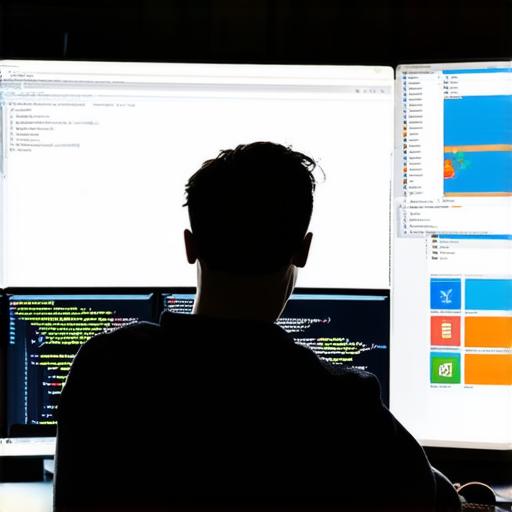As software developers, it’s crucial to understand the difference between software and applications to create effective solutions that meet the needs of end-users. In this article, we will explore what sets these two concepts apart and provide practical tips on how to distinguish between them when developing software products.
What is Software?
Software refers to a program or set of programs designed to run on a computer system, enabling users to perform specific tasks or functions. Software can range from simple utilities like file management tools to complex enterprise applications that handle critical business operations. The key characteristic of software is its ability to automate tasks and processes, making them more efficient and productive.
Software development involves creating software programs using programming languages and tools. Developers must understand the requirements of end-users and design software that meets their specific needs and expectations. Software development also requires testing, debugging, and maintenance to ensure that it continues to function correctly and efficiently over time.
What is an Application?
An application refers to a software program designed to run on a particular device or platform, such as a smartphone or computer operating system. Applications provide end-users with specific features and capabilities, enabling them to perform specific tasks or functions. Examples of applications include email clients like Gmail, social media platforms like Facebook, and gaming apps like Candy Crush.
Application development involves creating software programs specifically designed for a particular device or platform. Developers must consider the unique features and capabilities of each platform when designing applications. Application development also requires testing, debugging, and maintenance to ensure that it continues to function correctly and efficiently on different devices and platforms.
Factors that Distinguish Software from Applications
While both software and applications are forms of software, they differ in several key ways:
- Platform Dependency: One of the main factors that distinguish software from applications is their platform dependency. Software programs can run on multiple platforms, such as Windows, Mac OS, or Linux, without requiring significant modifications. In contrast, applications are designed specifically for a particular device or platform and may not function correctly or at all on other platforms.
- Complexity: Software programs tend to be more complex than applications. They often have a broader range of features and capabilities that enable users to perform various tasks and functions. Applications, on the other hand, are designed to provide specific features and capabilities, making them simpler in design and functionality.
- Deployment: Software programs can be deployed centrally or locally, depending on the requirements of end-users. Centralized deployment involves installing software on a central server that users access through their devices, while local deployment involves installing software directly on each user’s device. Applications are typically deployed centrally and require minimal configuration by end-users.
- Usage: Software programs tend to be used for more critical business operations, such as data analysis, accounting, or inventory management. In contrast, applications are primarily used for personal or entertainment purposes, such as social media, gaming, or productivity tools.
- Cost: Software programs tend to be more expensive to develop and maintain than applications, particularly those designed for complex business operations. Applications, on the other hand, are often less expensive and may even be free to use, depending on their intended purpose and audience.
Practical Tips for Distinguishing Software from Applications
When developing software products, it’s essential to understand the key differences between software and applications and design solutions that meet the needs of end-users. Here are some practical tips for distinguishing software from applications:

- Consider the Platform: Determine whether your solution is designed for a specific device or platform, such as a smartphone or computer operating system. If it’s intended for multiple platforms, consider designing it as software rather than an application.
- Assess Complexity: Evaluate the complexity of your solution and determine whether it provides specific features and capabilities or has a broader range of functionality.
